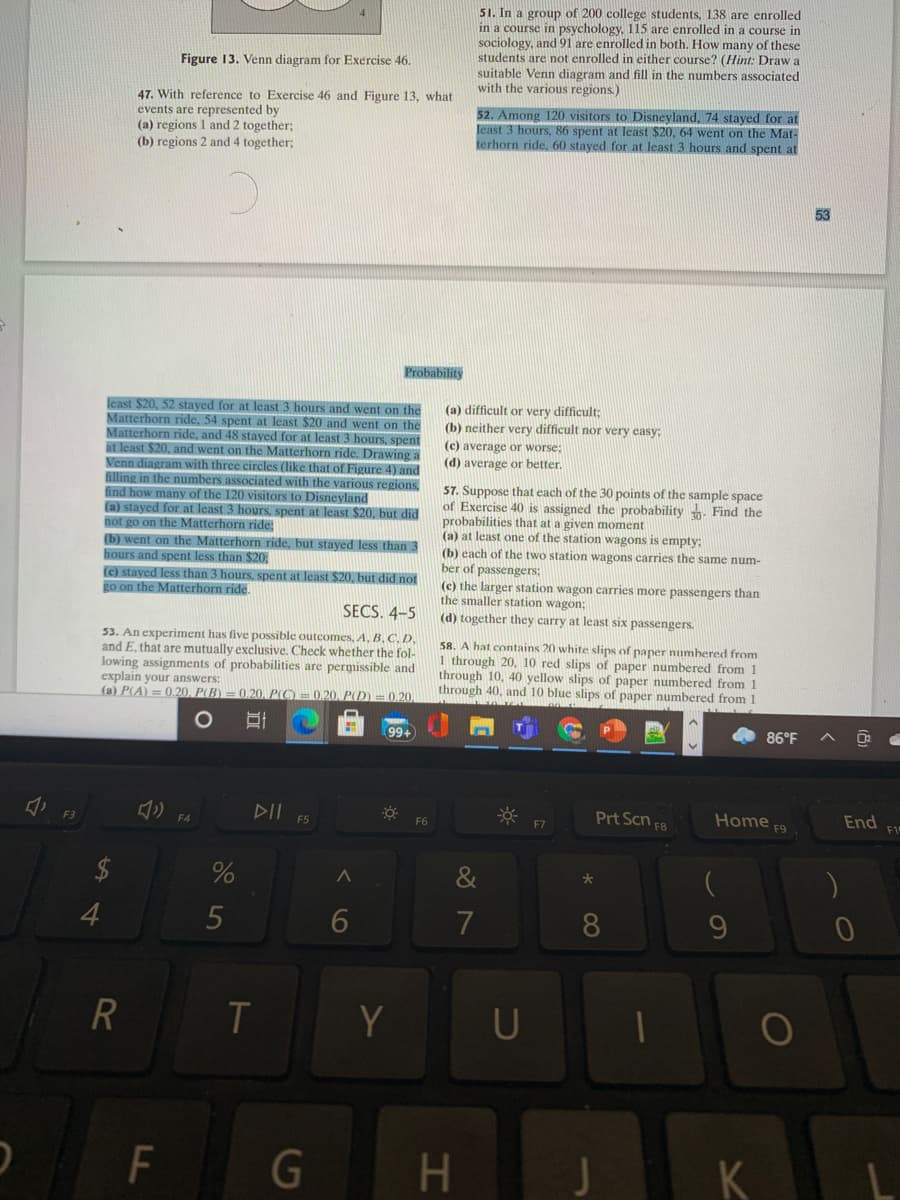events are represented by (a) regions 1 and 2 together; (b) regions 2 and 4 together; 52. Among 120 visitors to Disneyland, 74 stayed for at least 3 hours, 86 spent at least $20, 64 went on the Mat- terhorn ride, 60 stayed for at least 3 hours and spent at C. 53 Probability least $20, 52 stayed for at least 3 hours and went on the Matterhorn ride, 54 spent at least $20 and went on the Matterhorn ride, and 48 stayed for at least3 hours, spent at least $20, and went on the Matterhorn ride. Drawing a Venn diagram with three circles (like that of Figure 4) and illing in the numbers associated with the various regions, find how many of the 120 visitors to Disneyland (a) stayed for at least 3 hours, spent at least $20, but did not go on the Matterhorn ride: (b) went on the Matterhorn ride, but stayed less than 3 hours and spent less than $20 (c) stayed less than 3 hours, spent at least $20, but did not go on the Matterhorn ride. (a) difficult or very difficult; (b) neither very difficult nor very easy: (c) average or worse: (d) average or better. 57. Suppose that each of the 30 points of the sample space of Exercise 40 is assigned the probability . Find the probabilities that at a given moment (a) at least one of the station wagons is empty: (b) each of the two station wagons carries the same num- ber of passengers: (e) the larger station wagon carries more passengers than the smaller station wa
Addition Rule of Probability
It simply refers to the likelihood of an event taking place whenever the occurrence of an event is uncertain. The probability of a single event can be calculated by dividing the number of successful trials of that event by the total number of trials.
Expected Value
When a large number of trials are performed for any random variable ‘X’, the predicted result is most likely the mean of all the outcomes for the random variable and it is known as expected value also known as expectation. The expected value, also known as the expectation, is denoted by: E(X).
Probability Distributions
Understanding probability is necessary to know the probability distributions. In statistics, probability is how the uncertainty of an event is measured. This event can be anything. The most common examples include tossing a coin, rolling a die, or choosing a card. Each of these events has multiple possibilities. Every such possibility is measured with the help of probability. To be more precise, the probability is used for calculating the occurrence of events that may or may not happen. Probability does not give sure results. Unless the probability of any event is 1, the different outcomes may or may not happen in real life, regardless of how less or how more their probability is.
Basic Probability
The simple definition of probability it is a chance of the occurrence of an event. It is defined in numerical form and the probability value is between 0 to 1. The probability value 0 indicates that there is no chance of that event occurring and the probability value 1 indicates that the event will occur. Sum of the probability value must be 1. The probability value is never a negative number. If it happens, then recheck the calculation.

Trending now
This is a popular solution!
Step by step
Solved in 5 steps with 1 images


